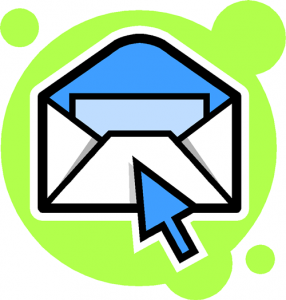
As an IT Manager, how good are you at sending emails? I’m not talking about your typing skills, nor am I talking about how many of Microsoft Outlook’s 1,000,000 features you have mastered. Nope, what I’m talking about is how effective your emails are. Do they get the job done or do they just get deleted?
Let’s talk about email for just a minute. It’s actually a great way to communicate – most of the modern world runs on it and we all know the feeling of helplessness that we feel when our email system goes down / becomes unavailable – what should we do? That being said, there are really 5 different ways for us to communicate with other folks in the modern IT workplace. What are these 5 ways you ask? Well they just happen to be: email (of course), IM, phone, written note, and verbal conversation. None of these ways of communicating replaces any of the others. Rather, they are all different tools that are well suited to different situations. Email is one of these tools and so let’s talk about things that you can do to make it an effective tool for you.
Subject Lines: This is your million dollar waterfront property when dealing with emails. You have no gurantee that any other part of your email is going to be read by anyone else that you send it to so this is where you need to capture your audience’s attention. You’ve got what, maybe 80 characters max, in which to motivate your reader to actually open the email. Make each character count!
Cut Down On The Chatter: How do you start your emails? Do you kick things off with sentences that sound like “Hi, how are you doing?” or “I was just thinking about you…”? Hey, if there is one thing that we are all lacking it is time. If the reader of your email can’t quickly figure out why you’ve sent them the email, then there is a good chance that they aren’t going to spent the time to read very far into your email. Try this: state your reason for sending the email in the first sentence in the email. This will allow your reader to quickly determine if they care about the rest.
Make Clear Requests: How many times have you received an email that was making a vague and unclear request? Using words like “look into” or “find out more about” just don’t clearly state what question the writer is trying to get an answer to. If you are going to send someone an email in order to get them to do something for you, please make sure that you provide the details that they will need in order to understand exactly what you want them to do and, of course, be sure to include a reasonable and specific deadline.
It’s Email, Not IM: Don’t get the two confused. In IM conversations we often misspell words and use lots of abbreviations in order to boost our typing speed. This kind of communication looks lousy when used for email. One additional point: emails often get forward to others and so you don’t want to come off looking “sloppy” to everyone who sees your email with IM content.
T.M.I.: Too Much Information is a common problem for emails. A single email should really only deal with one issue / question. Loading it up with more than one can quickly overwhelm your reader. If you have multiple issues / questions, then use multiple emails to gather information about them – this makes life easier for everyone involved.
How good of an emailer do you think that you are? Do you work with anyone who does a poor job of using email effectively? What are they doing wrong? Have you tried to correct them? Were you successful? Leave a comment and let me know what you are thinking.
